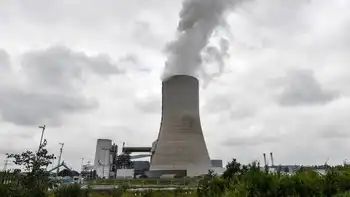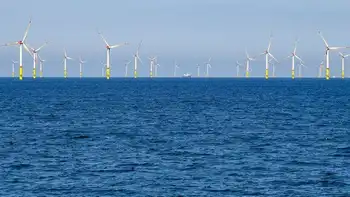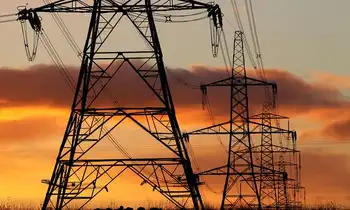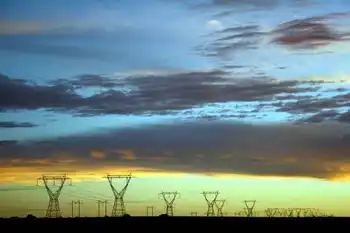A case for EVs in a carbon heavy Canada
By SolveClimate
Protective Relay Training - Basic
Our customized live online or in‑person group training can be delivered to your staff at your location.

- Live Online
- 12 hours Instructor-led
- Group Training Available
But will it work everywhere?
How about in a dirty energy place like Alberta, Canada, home to the climate-toxic tar sands, where about 90 percent of the electrical grid is powered by fossil-based sources?
The answer is yes, according to a new report by three engineering professors at the University of Calgary.
"Even in a thermal-dominated system like Alberta, we can still benefit significantly in terms of environmental impacts by using plug-in hybrid electric vehicles [PHEVs]. If we plan to charge them in a smart way, we can reduce a significant amount of emissions in the transportation system," says Hamid Zareipour, one of the report's authors.
The researchers found that if 30 percent of Albertans were driving PHEVs, tailpipe emissions would shrink by about 40-90 percent, with no game-changing breakthroughs needed.
The precise CO2 savings would depend on a whole host of factors, namely battery charge time, battery size and the amount of new wind power that gets connected to the provincial grid.
The Calgary study, Environmental Benefits of Plug-in Hybrid Electric Vehicles: the Case of Alberta, is the first report of its kind to analyze PHEVs in the tar sands province.
The research has implications worldwide.
PHEVs are today's hottest breed of hybrid electric vehicles. With their giant plugs, they can recharge right from a household outlet. Other advantages of PHEVs are obvious. They can cruise on all-electric mode until their battery runs out of juice and then switch to gasoline, an aspect that's beneficial for long-distance trips and quick refueling.
They also save money. The cost for electricity to power plug-ins is under a third of the cost of gasoline. As Joe Romm has documented in the Car of the Future is Here, "A full overnight charge might cost a dollar."
But PHEVs are not without their practical problems. The biggest being the battery – its massive size, insufficient storage capacity and safety problems, among other issues.
Another big hang up, more relevant to the Calgary paper, is this: If PHEVs are adopted widely, demand for electricity would grow. If that electricity is CO2 intensive, then it could dilute the benefits of the mass adoption of this clean transportation.
The American Council for an Energy-Efficient Economy (ACEEE) predicted in its study Plug-In Hybrids: an Environmental and Economic Performance Outlook that in areas where more than 80 percent of grid-power comes from coal-burning power plants, local CO2 emissions would actually increase.
Enter Alberta. There, the electrical grid is as dirty as ever, the most carbon-intensive among all the Canadian provinces. It is half coal power. Here's how the rest of it breaks down:
The system's total installed capacity is just above 12,000 MW. From this capacity, 5,893 MW of it is coal-fired, 4,686 MW is gas-fired, 869 MW is hydro, and just 497 MW, or 4 percent, is wind powered, according to the Calgary researchers.
That wind power slice, however small, is key.
Wind is an ideal source of electricity for powering PHEVs. The cars can be programmed to take power when the gusts are strongest (at night) and not have to deal with intermittency. On top of that, plugged-in PHEVs could be used as batteries, providing the needed energy storage capability for wind-generated power at no added cost to utilities.
Knowing this, the Calgary engineers sought to assess exactly how much electric energy could be squeezed from the province's current, and projected, wind levels. (Currently, there is 11,000 MW of interest in wind power developments.) They also figured out how much total energy it would take to charge 750,000 PHEVs, which equals 30 percent PHEV penetration, each day.
They looked at four different charging scenarios for the simulation: during the night (6 PM to 7 AM), during the day, randomly through the night and randomly over a 24-hour period.
Here's what they found: Even with today's dirty grid, the benefits of PHEVs in Alberta could be huge. Especially if cars get charged at night. Specifically, at 2007 wind production levels, a PHEV with a 20-kilometer battery range that's been repowered overnight could "save up to 80% in gas consumption compared to a conventional vehicle. This saving could grow to 100% if the wind production is four times as the base 2007 production level."
In comparison, the daytime scenario produced relatively dismal gas and CO2 savings.
Enacting a province-wide "smart grid" would be crucial to making a successful switch to PHEVs. The report recommends that the infrastructure include technology with communication links that allow system operators to distribute electricity to vehicles when wind production is strongest.
The government of Ontario, for its part, has been looking to jolt the adoption of electric cars, offering generous incentives for car buyers and moving forward on installing charging infrastructure.
Not so in Alberta, where production of the tar sands, the world's filthiest fuel, reigns supreme. There, this all remains theoretical.
Still, the research is not for naught. It raises the promising possibility for achieving an effective clean-car makeover anywhere – even in the world's dirty energy economies.











